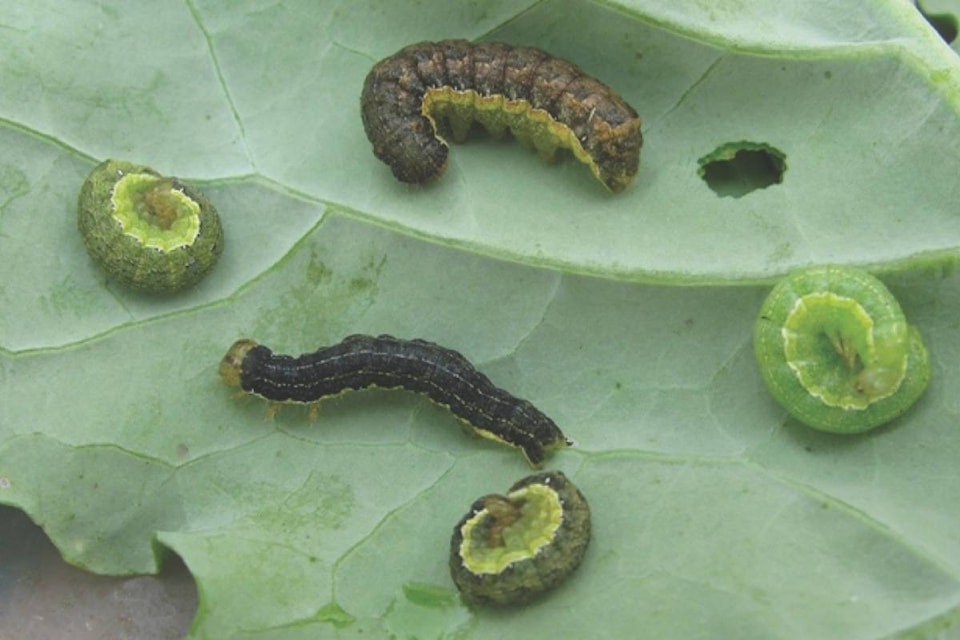Brought from Europe more than 100 years ago as an ornamental plant, Common Toadflax has now become a serious problem to rangeland and mountain meadows in North America. This perennial plant makes seed, but reproduction is primarily by sprouting from its extensive, creeping root system (rhizomes) – two-to-three week old seedlings can produce creeping roots.
Identification
Stems: Stems are erect, hairless, generally un-branched and can be as short as 15 centimetres or grow to one metre tall. Mature plants may have one to 25 stems.
Leaves: Leaves are soft, lance-shaped, pale green and numerous. Leaves are mainly alternate but may appear opposite on the lower stem due to crowding. Leaves can be up to 10 centimetres long and are attached directly to the stem.
Flowers: Flowers are bright yellow, arranged alternately in dense spikes at the ends of stems and have a long spur extending from the base that is usually as long as the flower itself – in all, 2 to 3.5 centimetre long. The snapdragon-like flowers can have orange colouring on the throat. They flower at different times depending on site conditions. In high elevations, they could flower as late as July. Flowers are identical to Dalmatian Toadflax, but leaf shape differs between the two plants.
Seeds: The seeds are winged, disk-shaped, and dark brown to black. Despite its prolific seed production (5000 seeds/stem) and long viability (up to 10 years), germination rates are often very low – less than 10 per cent.
Prevention
Spurred snapdragon, another common name for this plant, often appears in wildflower seed mixes. Do not purchase seed mixes unless all contents are listed.
Control
Once present, it establishes dense patches that are extremely difficult to control, let alone eradicate. Multiple control methods and several years of commitment provide the best success.
Cultivation: Repeated cultivation can effectively destroy the root system. Equipment should be thoroughly cleaned after use.
Mechanical: Thorough hand-pulling can be effective in soft soils where the roots can be removed easily. Repetition is required to deplete the seed bank and all root pieces. Mowing can assist by starving the roots.
Chemical: Acetic acid, Amitrole, Dichlorprop, Diuron, Glyphosate, Hexazinone, Imazapyr, MCPA, Metsulfuron- methyl, Picloram and Tribenuron-methyl and Thifensulfuron- methyl (in a product mix) are registered for use on toadflax. Always check product labels to ensure the herbicide is registered for use on the target plant in Canada by the Pest Management Regulatory Agency. Always read and follow label directions. Consult your local Agricultural Fieldman or Certified Pesticide Dispenser for more information.
Biological: Several biological control agents have been imported to control Common Toadflax. New research shows a stem mining weevil, Mecinus janthinus, successfully established and provided effective control.
Bertha Armyworm: big pest in canola fields
Bertha armyworm (Mamestra configurata) is one of the most significant insect pests of canola in Canada. The pest occurs throughout Manitoba, Saskatchewan, Alberta and the interior of British Columbia. Bertha armyworm is native to North America and belongs to a group of insects referred to as “climbing cutworms.”
Bertha armyworms develop through four distinct stages: adult, egg, larvae and pupa. In Canada, there is one complete generation per year. Only the larval stage is damaging to canola crops. Larvae hatch from eggs laid by adult moths in mid-June through early August. An adult female moth can lay up to 2,150 eggs in a canola field. Newly hatched bertha armyworm larvae are about 0.3 centimetres long. They are pale green with a pale yellowish stripe along each side. Because of their size and colour, they are difficult to see on the underside of leaves. When disturbed, small larvae may drop off the leaves by a fine silken thread. This behaviour makes it difficult to distinguish small bertha armyworm larvae from those of the diamondback moth, which display a similar behaviour. Large larvae usually drop off the plants and curl up when disturbed, a defensive behaviour typical of cutworms and armyworms. Larvae take approximately six weeks to complete their development, depending on temperature. As they mature, their colour becomes variable. Some remain green, but many become brown or velvety black. At maturity, the larvae are about 4 cm long, with a light brown head and a broad, yellowish-orange stripe along each side. The velvety black larvae have three narrow, broken white lines on their backs.
The degree of crop damage varies with the crop, the plant’s growth stage, the growth stage of the larvae and the number of larvae present. Significant crop damage usually occurs within a three-week period between late July and late August, depending on the season and crop location.
Bertha armyworm populations fluctuate widely from year to year. To assist producers with making crop protection decisions, a monitoring program has been implemented for the Canadian Prairies. The emergence of adult moths from overwintering pupae is monitored using accumulated degree-days. After emergence, the flight of bertha armyworm moths is monitored using a network of pheromone-baited traps, which attract the male moths. This network of approximately 200 pheromone traps is organized by Alberta Agriculture and Rural Development, and individual traps are managed throughout Alberta by a wide range of cooperators including many municipalities. The monitoring program has been conducted in Alberta since 1995. The number of moths collected by these traps gives an indication of the risk of bertha armyworm larval infestations within a region. Generally, higher numbers of moths during the flight period (around mid-June through July) indicate a greater risk of larval damage (in July and August). Individual fields should still be scouted for the presence of larvae, but the trap numbers can provide a level of risk for a region.
The 2017 survey has just finished for the year. Isolated pockets of larval infestation can still pop up in fields. Field scouting in August for bertha armyworm is a good precaution to take.
For more information on bertha armyworm, the monitoring program, or control methods, please see the Alberta Agriculture and Forestry website.
